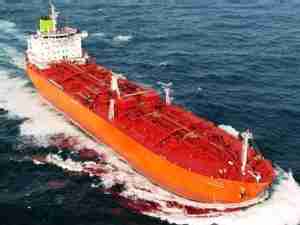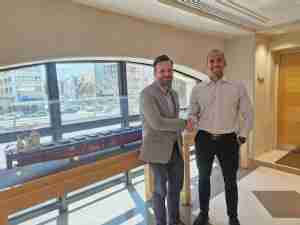The Canadian port official who has just assumed chairmanship of the American Association of Port Authorities says he will aim to further expand the association's reach throughout the Western Hemisphere.
'My No. 1 internal goal is the health of this organization, and that means making this truly a hemispheric organization,' said Capt. Allen O. Domaas, president and chief executive officer of the Fraser River Port Authority of New Westminster, British Columbia. (Domaas' said his top 'external goal' is addressing intermodal infrastructure needs; see story on page (#).)
Domaas, who assumed a one-year term as AAPA chairman Sept. 14, on the final day of the association's 95th annual convention in New Orleans, noted that nearly half of AAPA's current port membership is from outside the United States. AAPA port authority members include 84 from the United States, 47 from Latin America (including Mexico), 16 from Canada and 14 from the Caribbean.
Several association efforts in recent years have aimed at expanding AAPA's hemispheric reach, including the appointment of a Colombia-based Latin American coordinator, the Seaports of the Hemisphere Allied in Relationships for Excellence (SHARE) program, conferences in and dedicated to the Latin American and Caribbean regions and, most recently, the development of the 'PPM Latino' version of the Professional Port Manager certification program that focuses on distance learning.
Domaas said he would like to see memoranda of understanding signed between port entities throughout the hemisphere, as well as further enhancement of international programs.
AAPA rotates non-US port officials into the chairman position on a regular basis. The last non-US chairman was Agustin Diaz of the Cura'ao Port Authority in fiscal 2003, while the most recent Canadian chairman was Ross Gaudreault of the Qu'bec Port Authority in fiscal 2001. Since AAPA's founding in 1912, Domaas is the 13th Canadian to be the association's top elected officer, known prior to 1980 as its president.
Bernard S. Groseclose Jr., president and chief executive officer of the South Carolina State Ports Authority, whom Domaas succeeded in the chairman role, noted that his primary goals when he assumed AAPA's reins a year earlier also were related to hemispheric growth and intermodal infrastructure.
'I think we've had a successful start to that effort, as we try to be sensitive to a diversity of issues and reflect our various delegations throughout the hemisphere,' Groseclose said.
Another focus of the AAPA convention was the need to enhance communication of industry issues. A full morning of the business program was dedicated to presentations by award-winning communicators from outside the port industry.
Lori A. Baer, executive director of Port of Palm Beach, who moderated those sessions, said, 'I cannot state strongly enough that we must grab hold of every opportunity we have to communicate our messages effectively.
'If we do not do so,' she continued, 'we won't have the water depth we need. We won't have the facilities we need. We won't have the inland infrastructure we need. In fact, if we do not all make a strong commitment, individually and collectively, as the lifeblood of our hemisphere's trade and transportation, we will not have our ports.'
In a separate session devoted to approaches to emergency situations, Phyllis Saathoff, managing director of Port Freeport, also cited the importance of communications in trying times.
'One of the greatest concerns is communications,' said Saathoff, who over the past year, while chairing the AAPA Working Group on Emergency Preparation and Response, compiled for AAPA and its members a comprehensive emergency preparedness and continuity of operations planning manual for best practices.
The New Orleans convention also saw AAPA welcome to its PPM ranks the 58th port official to complete the certification program since its initiation in 1995. The latest certificant is Particia Cardenas, community relati








